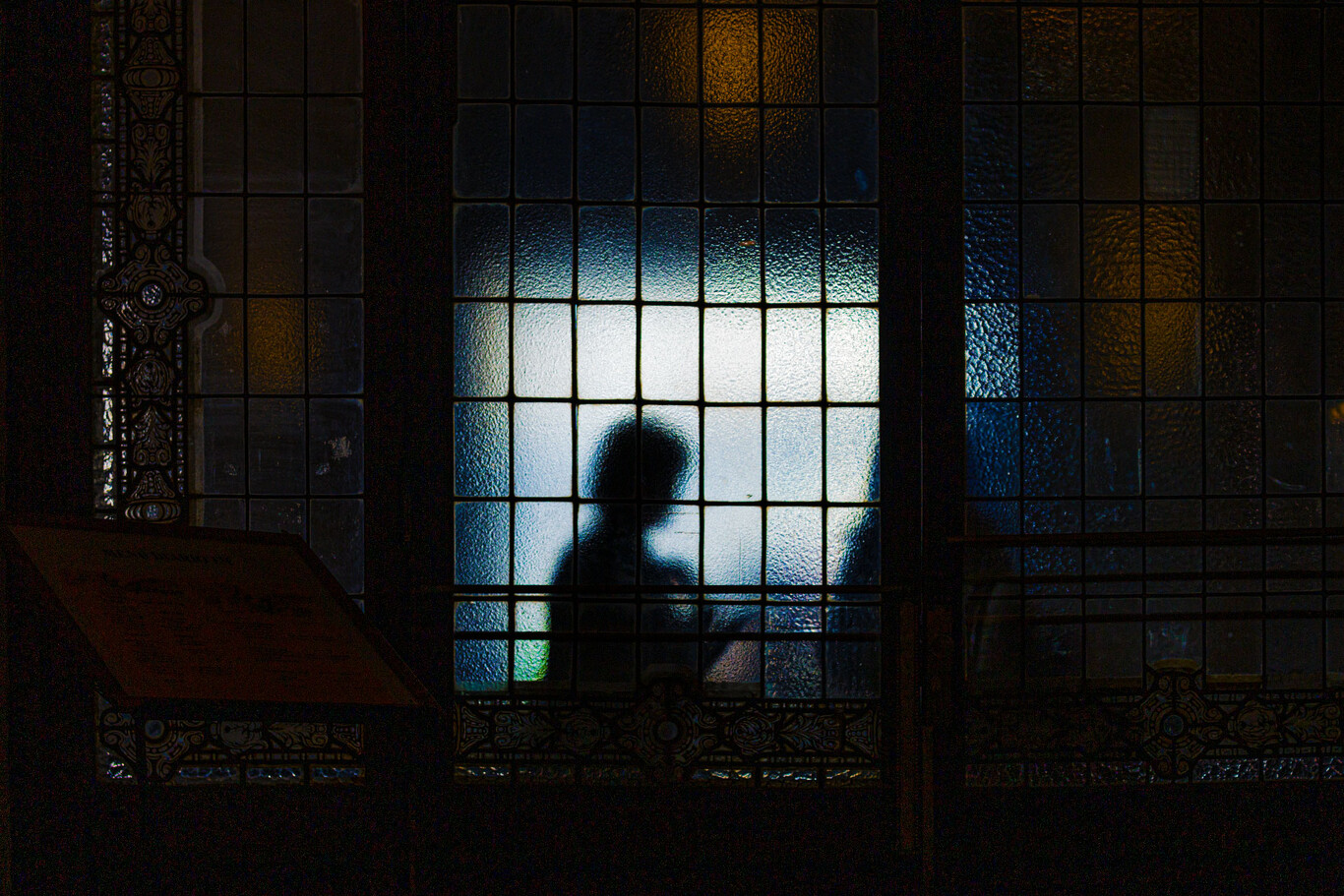
In the mid-19th century, the first photograph of a ghost was documented. Since then very few images have been seen that do not have a logical explanation. We are going to talk about ghost photography, discover the techniques to do them, and do photographic tricks in case we do not believe in them. It is very easy to make them, the difficult thing is to demonstrate that it is authentic.
The magical, alchemical air of the first techniques, added to a few years (the Victorian era) in which death was also photographed, led to its becoming the perfect art to demonstrate the existence of ghosts.
It was in fashion during the second half of the 19th century and the first decades of the 20th century. It all began with the work of William H. Mumler in March 1861. And since then, thousands of ghostly images have circulated throughout the wide world. And very few hold up to scientific analysis.
A brief history of ghost photography
The first photograph that was publicized as the real image of a ghost was the result of chance or error, like all the great inventions of humanity. The already mentioned American photographer William H. Mumler made a double exposure, without realizing it, and realized the potential to deceive that he had such a laboratory technique.
We can see himself, a jeweler about to change his profession, and behind him the ghostly figure of his cousin. According to what they say in the Getty Museum in Los Angeles, which has more than 30 photographs of the author, he wrote that he was aware of the error and that when the image fell into the hands of the spiritualism magazine ‘The Herald of Progress’ everything changed.
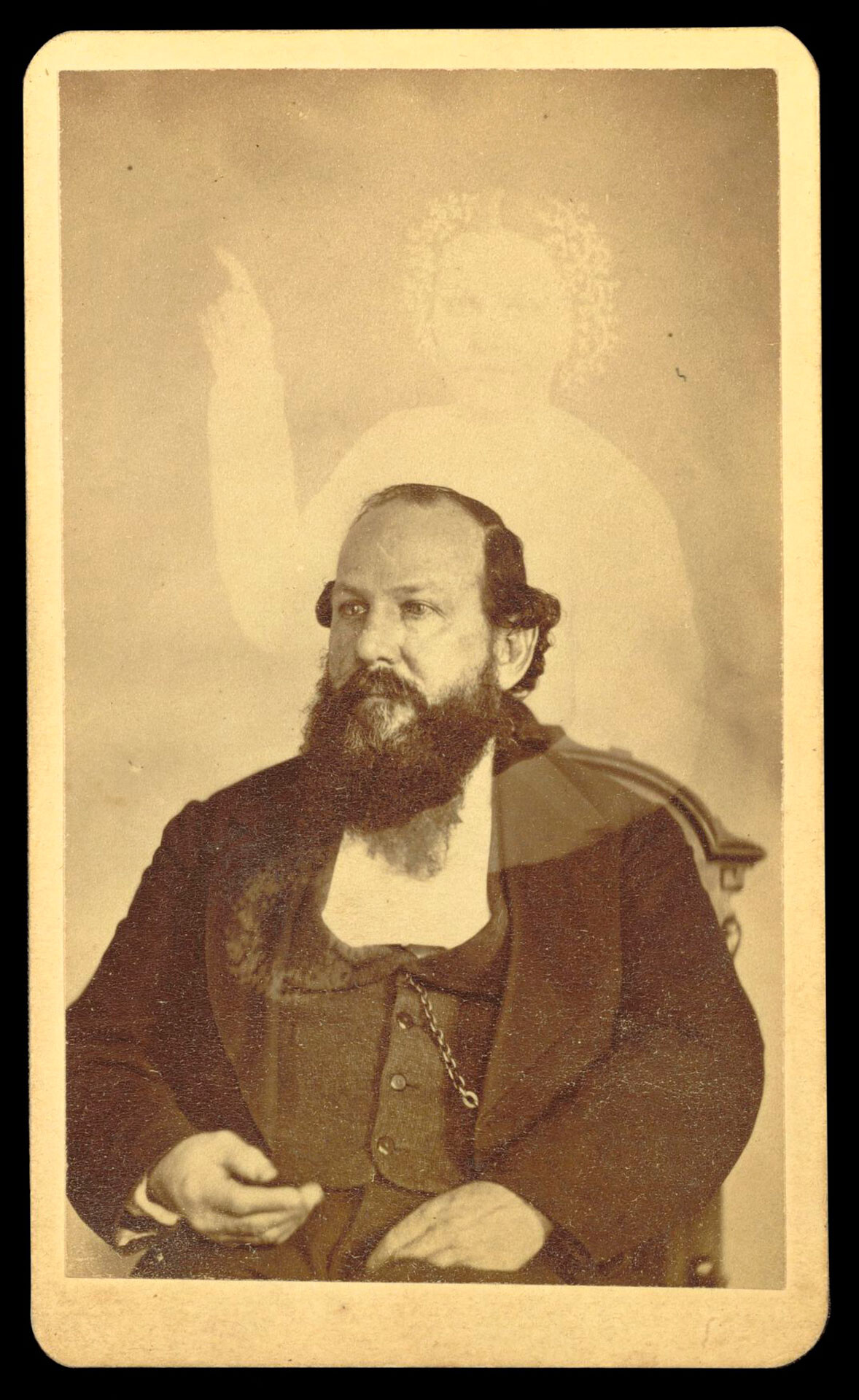
This effect, plus the long exposure times, was well known. A photograph by one of the great masters of photography, Roger Fenton, is preserved, showing the shadow of the caretaker of Prince Arthur, son of Queen Victoria. In a manual that was published in 1856, the author of it says:
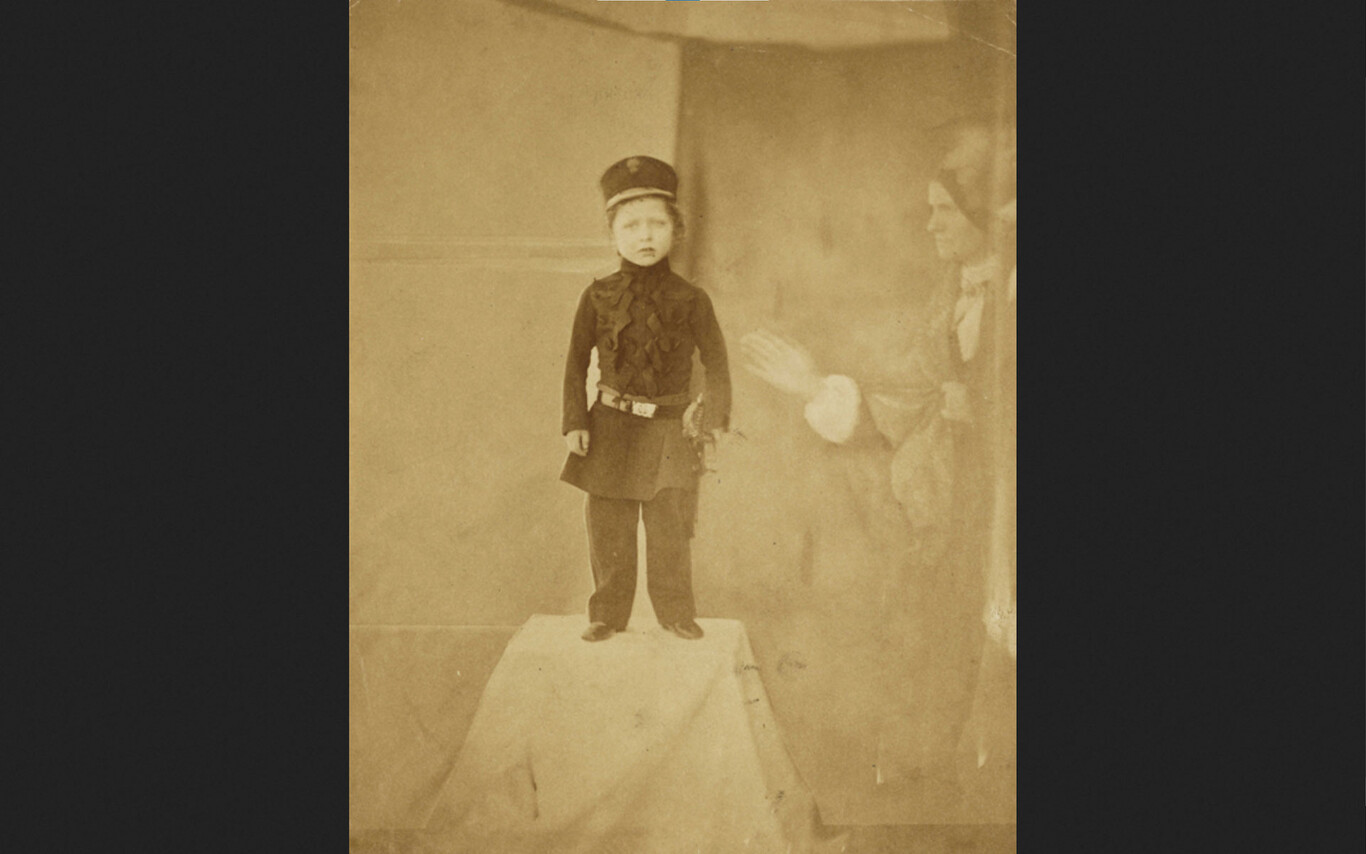
In another book on photographic techniques, written by Walter Woodbury in 1896, it is explained how to achieve the famous ‘ghost effect’:
But as we have seen, these techniques caught the attention of many con artists who wanted to take advantage of Victorian society’s attraction to death. In the United States, the Civil War was recent and many wanted to speak with the fallen in combat. Later, during World War I, death invaded the world.
And many wanted to remember. Spiritualist societies were founded that claimed they could contact the dead to receive messages. And they had very prestigious members, like Sir Arthur Conan Doyle, the writer of Sherlock Holmes, the famous detective.
The famous writer was deceived by the photographs taken of some girls with forest fairies, but this is another story that deserves to be told carefully. The technique to get them is the same.
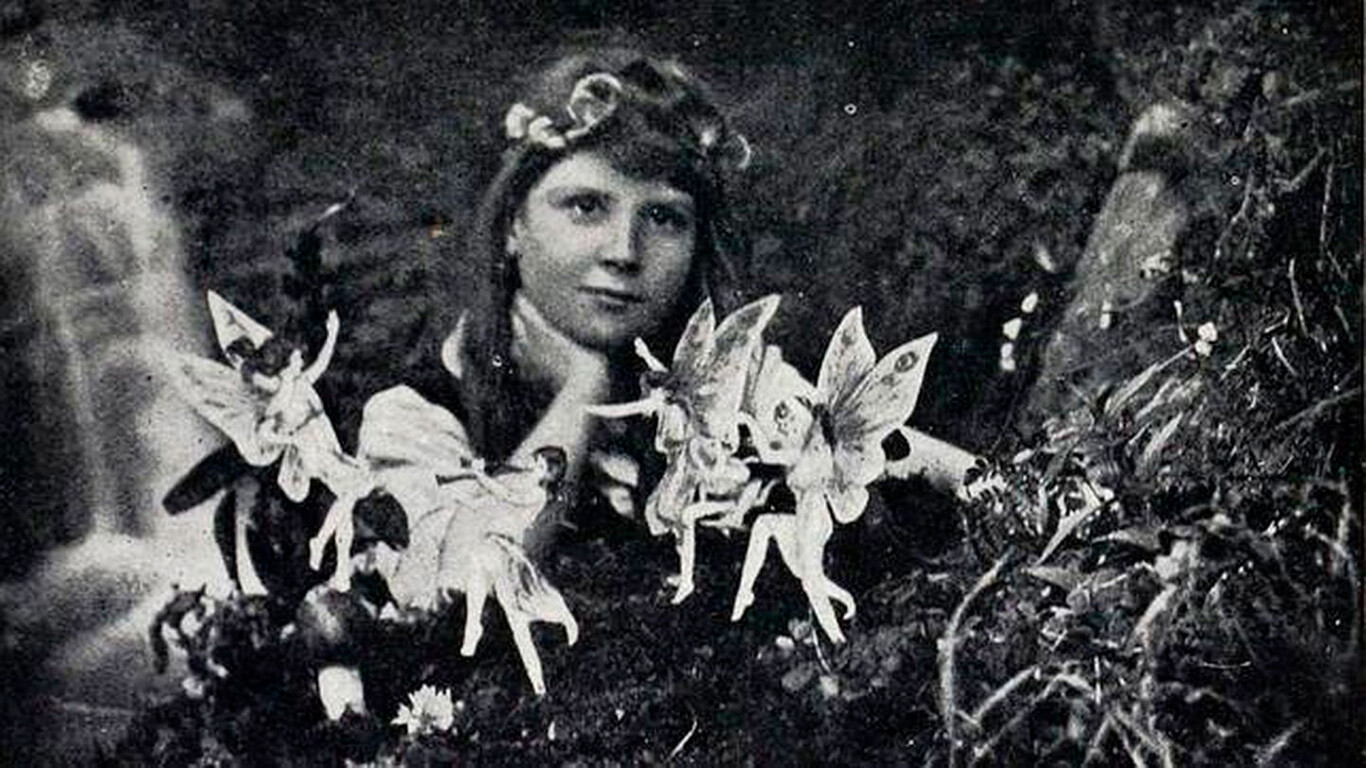
William H. Mumler was the first and most famous of all ghost photographers. Over time, he was denounced for deceiving his clients, but it could never be proven if he was lying or not. It is suspected that his technique was nothing more than a negative previously exposed with the figure of the relative that he had found at his client’s house. Since he destroyed his negatives at the end of his career, we will always have doubts. It depends on how skeptical you are.
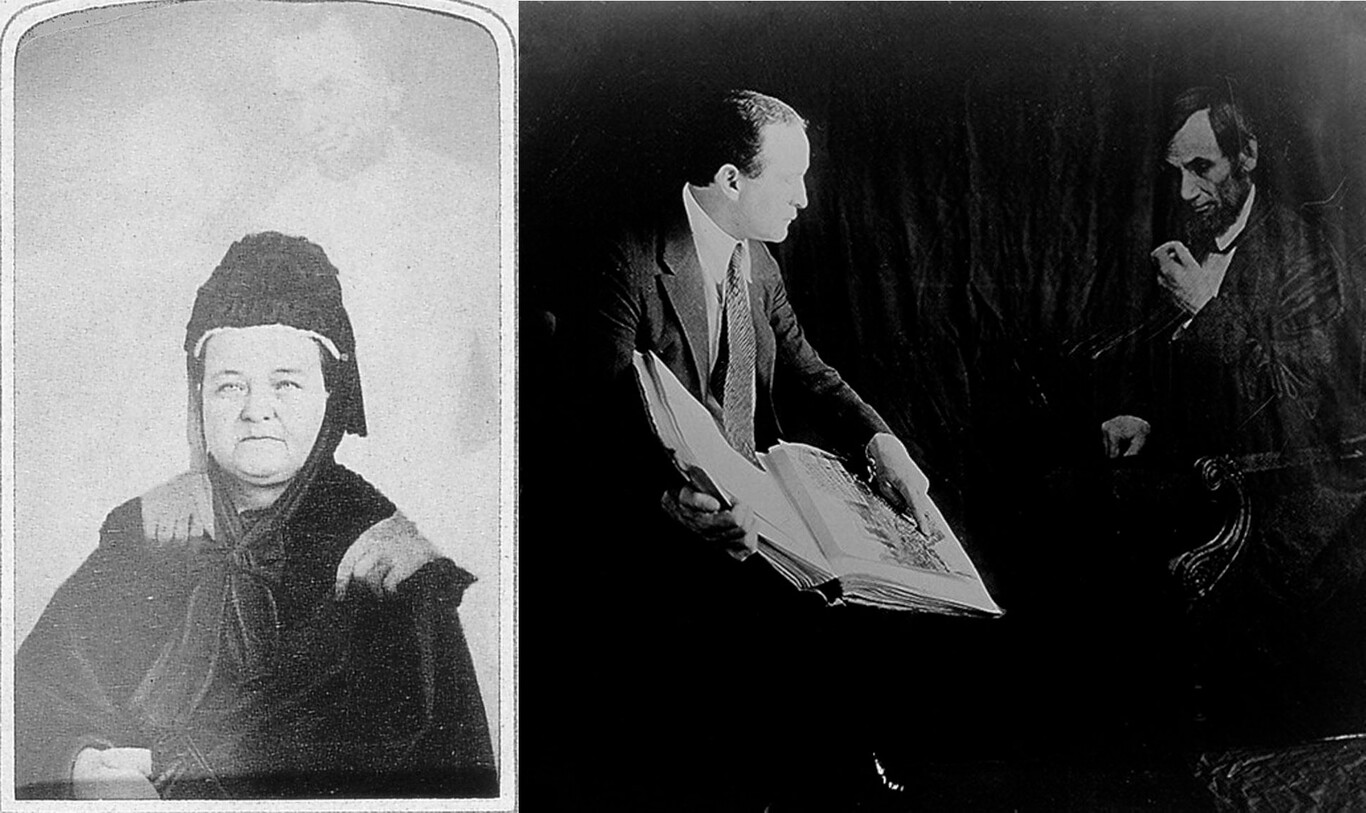
When his fame was waning after the trial that changed his life, Mary Todd Lincoln posed for him in 1871 and to everyone’s surprise, the ghost of the former president, who had died five years before, appeared. She died convinced that she had posed with her murdered husband in 1865. As a curious fact, the great magician Houdini replicated the photograph to prove the lie.
Since then we have divided ourselves into believers and non-believers of everything we see. Throughout recent times disturbing images have appeared that technicians have been unable to explain. They have not detected any of the usual tricks.
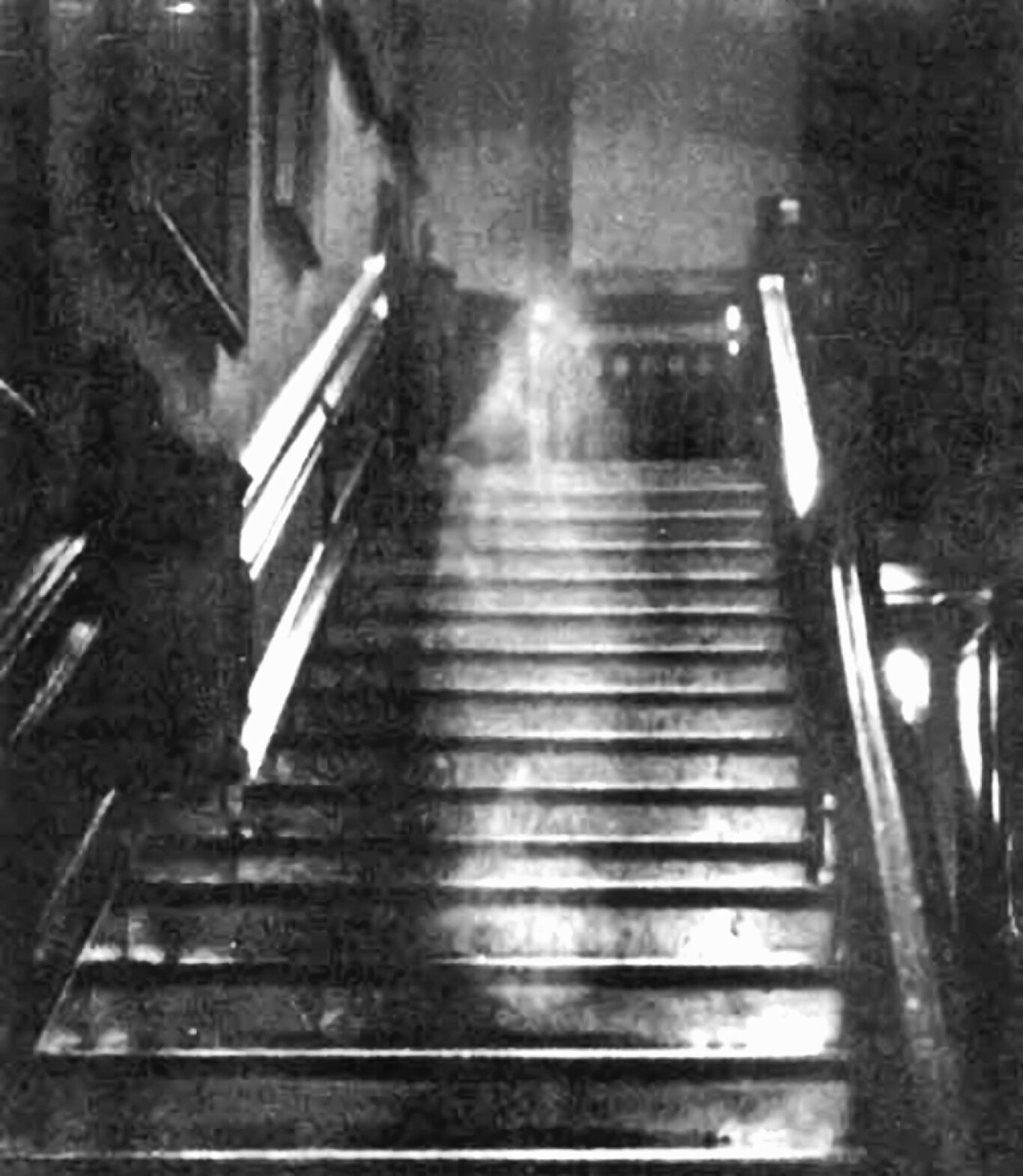
‘The Brown Lady’ is one of the most famous ever published. It is a direct photograph. There is no double exposure of the negative or manipulation of the positive. The photograph is from 1936, and the story of this ghost has been circulating since 1835.
It can be a spot of light or the superimposition of the image of a statue of the Virgin Mary. But it is one of the few and most elegant spectral images that we can find.
No image makes everyone believe in the existence of ghosts. It is true that hundreds of videos circulate on the internet, and that we can get to see them. But there is still nothing that invites us all to believe.
A ghost, by social convention, has to be transparent, ethereal, and in most cases, hardly recognizable. For this reason, it is easy to confuse it with a relative or to imagine that it is something that we want to see with all our might. That’s why it works, so they always appear blurry, jittery, or jittery.
Techniques for taking pictures of a ghost
I have never taken a photograph of a ghost. Only once in my life may I have seen one, and I’m not even sure. For this reason, I cannot say how to photograph them. But I can tell you how to simulate a ghost with Adobe Photoshop.
As we have seen above, the techniques have been known since the beginning of photography and with the help of Adobe Photoshop, since it allows you to work with layers, it is relatively simple.
With the help of Adobe Photoshop, we only need the inspiration of silent movies, and above all of Meliés and Segundo de Chomón, two great masters when it comes to creating ghosts. It can also be done with Davinci Resolve, as you can see here:
- To take these photographs we only need the camera and a stable surface, or even better a tripod.
- We take two identical photographs. Only our model is characterized as a ghost must appear in one.
- In Adobe Photoshop we open both photographs in the same file. The easiest thing is to open both, select one and go to the classic Ctrl+A to select; Ctrl+C to copy and Ctrl+V to paste into the other photo.
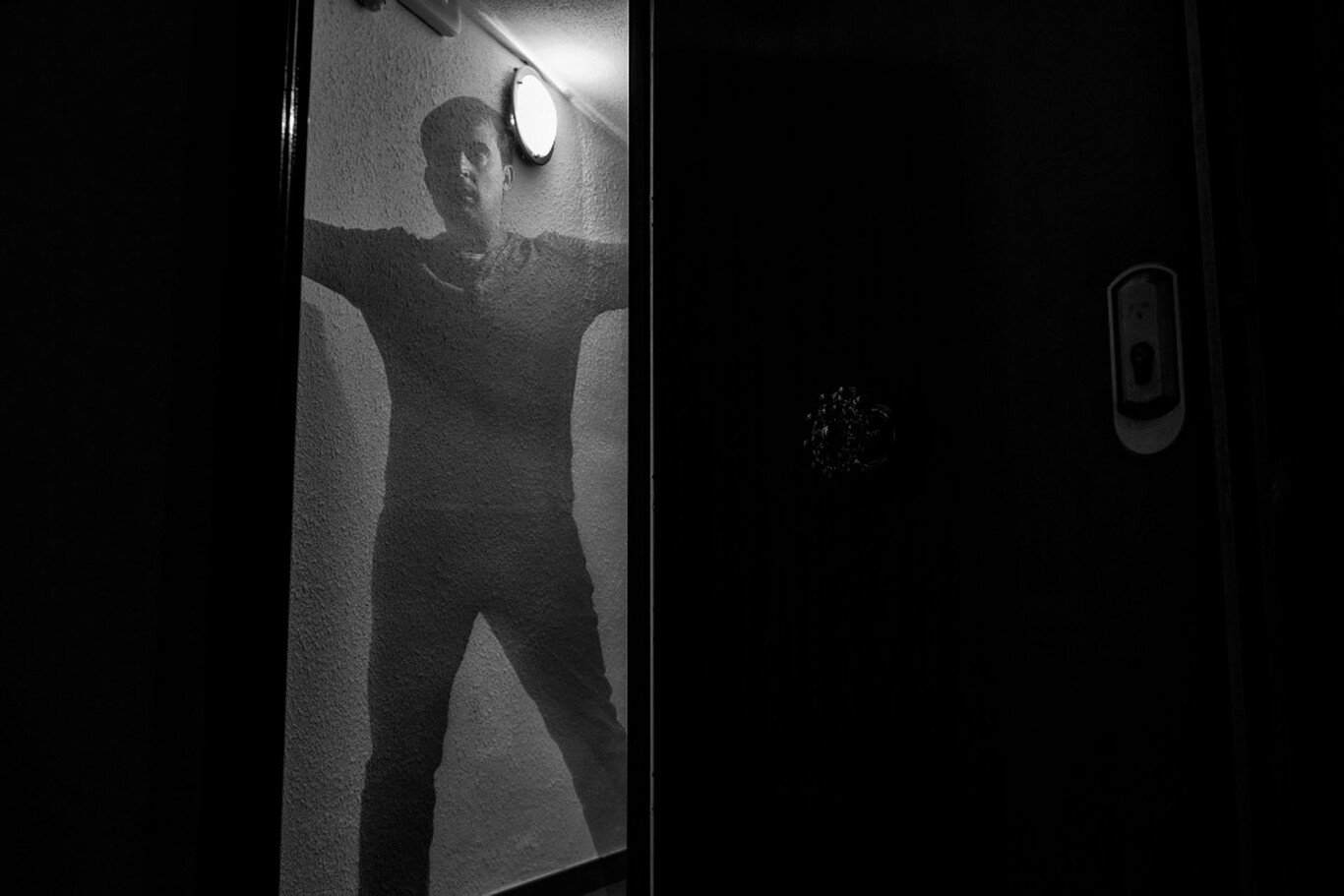
- To the image above, which should be the ghost, we just have to lower the Opacity.

Sharlene Meriel is an avid gamer with a knack for technology. He has been writing about the latest technologies for the past 5 years. His contribution in technology journalism has been noteworthy. He is also a day trader with interest in the Forex market.











